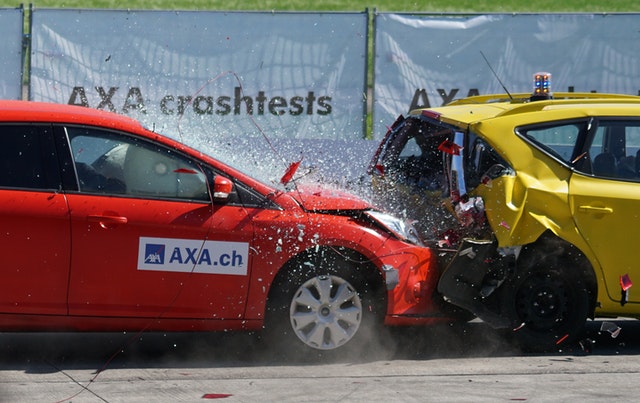When another car hits you, it may seem obvious who’s to blame. However, you could be just one piece of the puzzle. You may be involved in a multi-car accident that another driver caused.
Multi-car accidents can occur in many ways, and they all range in severity. They could be as minor as a fender bender in a city street or as severe as a multi-car pileup on the highway like something you would see in the Daytona 500.
In these cases, determining fault may not be as obvious as you thought, depending on the magnitude of your accident.
How Do Multi-Car Accidents Occur?
Multi-car accidents often occur when a driver fails to stop behind the car in front of them and rear-ends a vehicle. This accident causes a chain reaction leading to several rear-end accidents. That’s why it’s essential to keep your eyes on the road and utilize these five tips to avoid common types of car accidents.
What Causes Multi-Car Accidents?
Knowledge is power, and the best way to avoid multi-car accidents is to understand what causes them in the first place. Due to the many drivers involved in these accidents, there can be many reasons why they occur.
Negligence
Negligence on the driver’s part is the top reason for multi-car accidents as well as any car accident. It’s the careless or reckless behavior of a person that causes harm to others. Examples of driver negligence include:
- Texting and driving
- Speeding
- Failing to stop at traffic lights or stop signs
- Driving drunk
Weather
Sometimes, the cause of a multi-car accident can be out of anyone’s control. This is especially true when driving in inclement weather. Poor weather conditions like ice, snow, or rain cause drivers to lose control of their cars and crash into the vehicle in front of them, starting a chain reaction.
The weather has also caused deadly pile ups on the highway, so be sure to proceed at low speeds and respect the elements.
Traveling Close Together
When a vehicle follows too close to the car in front of them, they don’t have much time to react if the other vehicle makes a sudden stop. This can cause a rear-end accident that can potentially lead to a multi-car accident.
Rubbernecking
Rubbernecking involves multiple drivers who stop to look at another accident. In the process, they get into an accident. As tempting as it is, it is vital to keep your eyes on the road when passing an accident or car crash.
Who’s At Fault?
As previously stated, determining fault in multi-car accidents is not so cut and dry. This is especially true in more severe accidents that include many drivers. In a typical multi-car accident, a driver rear-ends the car in front of them and causes a chain reaction. In this case, the driver in the back is at fault. However, other parties could be to blame.
Multiple Drivers Could Be At Fault
Depending on your accident details, multiple cars could share fault in your accident. Just because the driver in the back caused a chain reaction due to their negligence doesn’t mean that other drivers weren’t negligent as well. The amount of shared fault will be determined by police and documented in their report.
Third Parties
Often, multi-car accidents can be indirectly caused by a third party. Here’s a list of who those could be.
(1) Construction Companies
If a construction site fails to provide appropriate signage, it may cause a driver to crash into another vehicle to avoid workers and cause a chain reaction.
(2) Car Manufacturers
Thousands of cars are recalled every year and are the cause of many accidents. For example, a driver may not have been able to stop their vehicle due to faulty brakes. This manufacturer’s defect could be to blame for a multi-car accident. In this case, the car manufacturer is vulnerable to a lawsuit.
(3) Municipalities
There are instances where a municipality could be at fault for a multi-car accident. Since they owe a duty of care to citizens to have safe roads, they could be found negligent if they fail to provide this duty. For example, if roads are not de-iced promptly, municipalities could be at fault.
Accident Reconstructionists Can Determine Fault
If the accident you’re involved in includes many drivers and determining fault is complex, an accident reconstructionist may be recruited to investigate the crash. These experts can perform a forensic analysis on the vehicles involved to determine the exact cause of the accident.
It’s important to note that accident reconstructionists are usually recruited for severe accidents that result in considerable damages.
What to Do if You’re In A Multi-Car Accident?
After a multi-car accident, you will most likely be shaken up, depending on the severity of the crash. You should prepare in advance what to do in case you’re in this situation. Here are three things you can do after your accident. We will assume that 911 has already been called.
1. Document the Scene
If you’re able, be sure to take photos and video of the scene. Document the cars involved, the area in which the accident took place, and the damage done to your vehicle. Properly documenting the scene will assist you if you need to file an accident claim.
2. Obtain a Police Report
Even if you’re involved in a minor multi-car accident, it’s always wise to make sure police are on the scene to ensure everything is documented. Your insurance company and a lawyer can use the police report on the accident to support your case.
3. Talk to Witnesses
Gather contact information of anyone who witnessed your crash. Also, make sure you get the information of other drivers involved. These witnesses will help determine the order of impact in the car accidents, which will help determine who was at fault.
Every multi-car accident is different, and many parties can be at fault as a result. However, knowing how these accidents occur and what to do afterward can go a long way in helping you recover what you lost.










